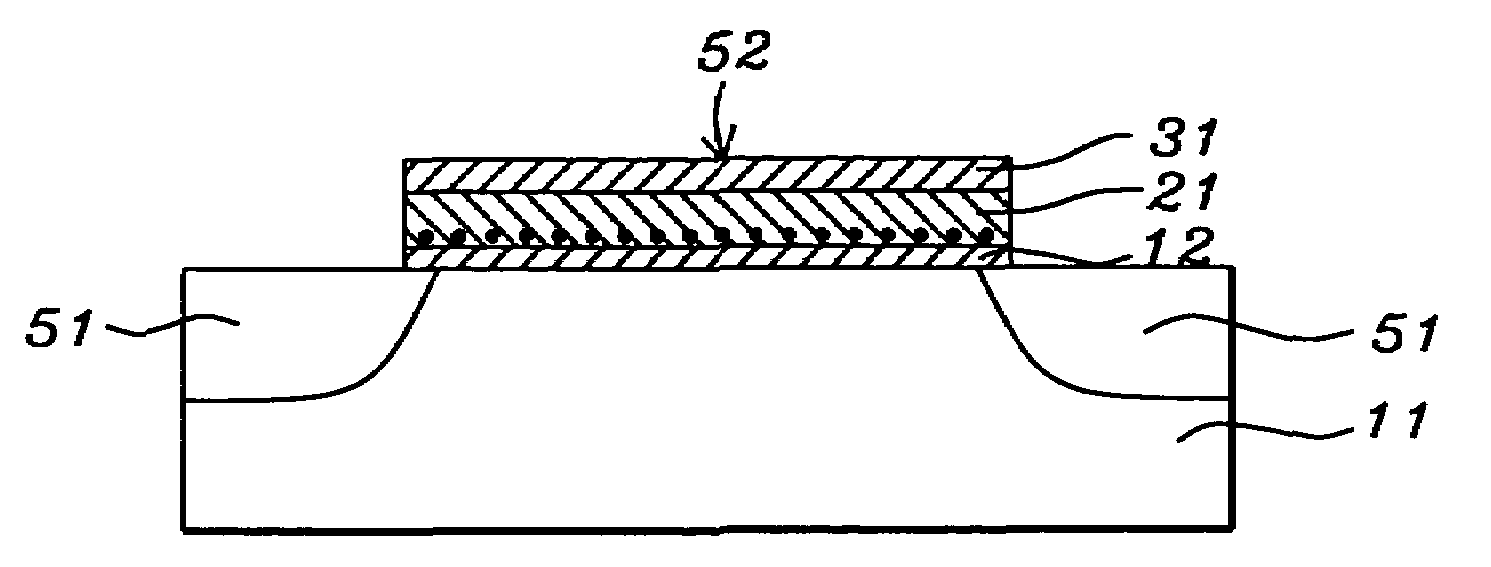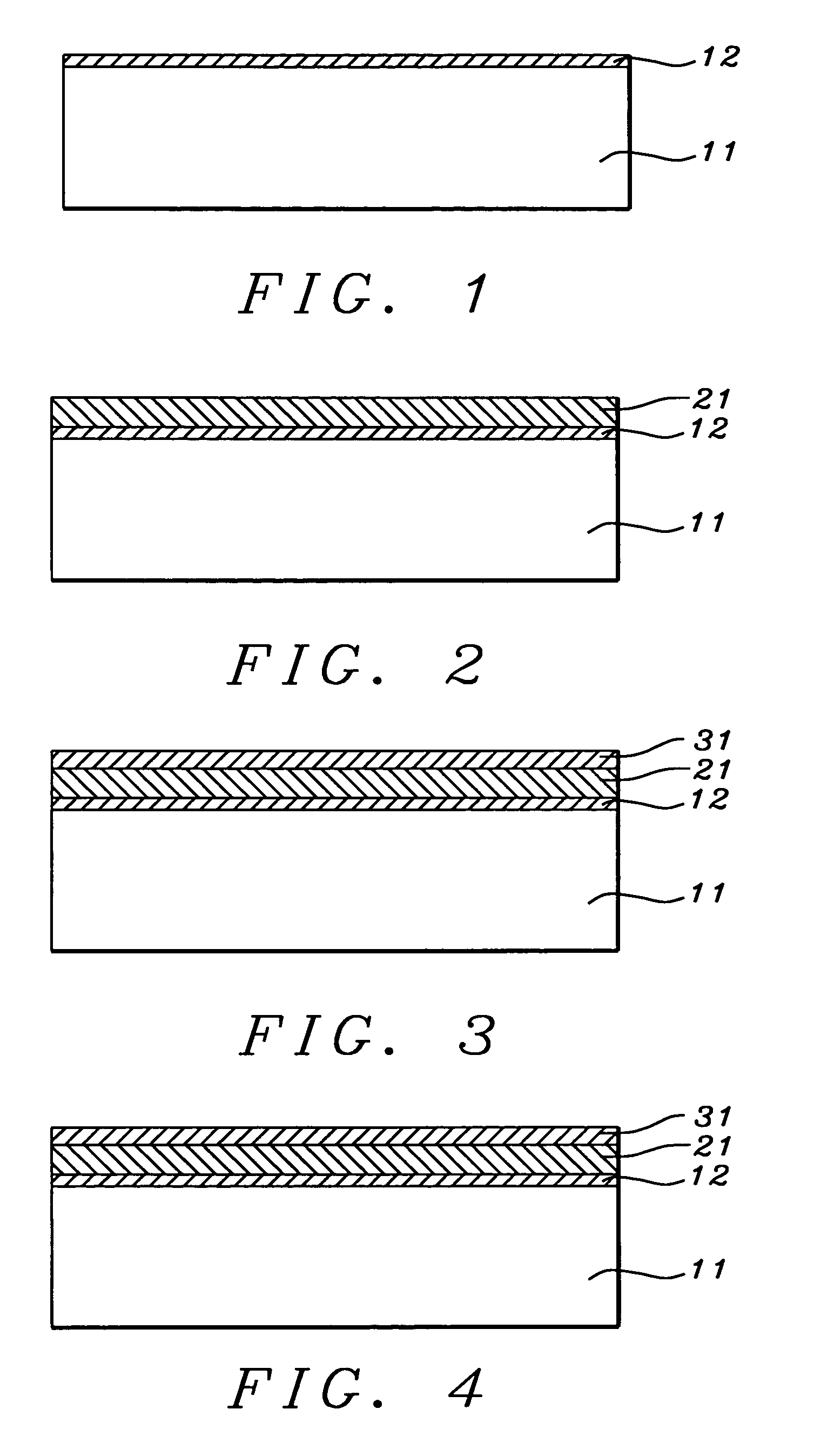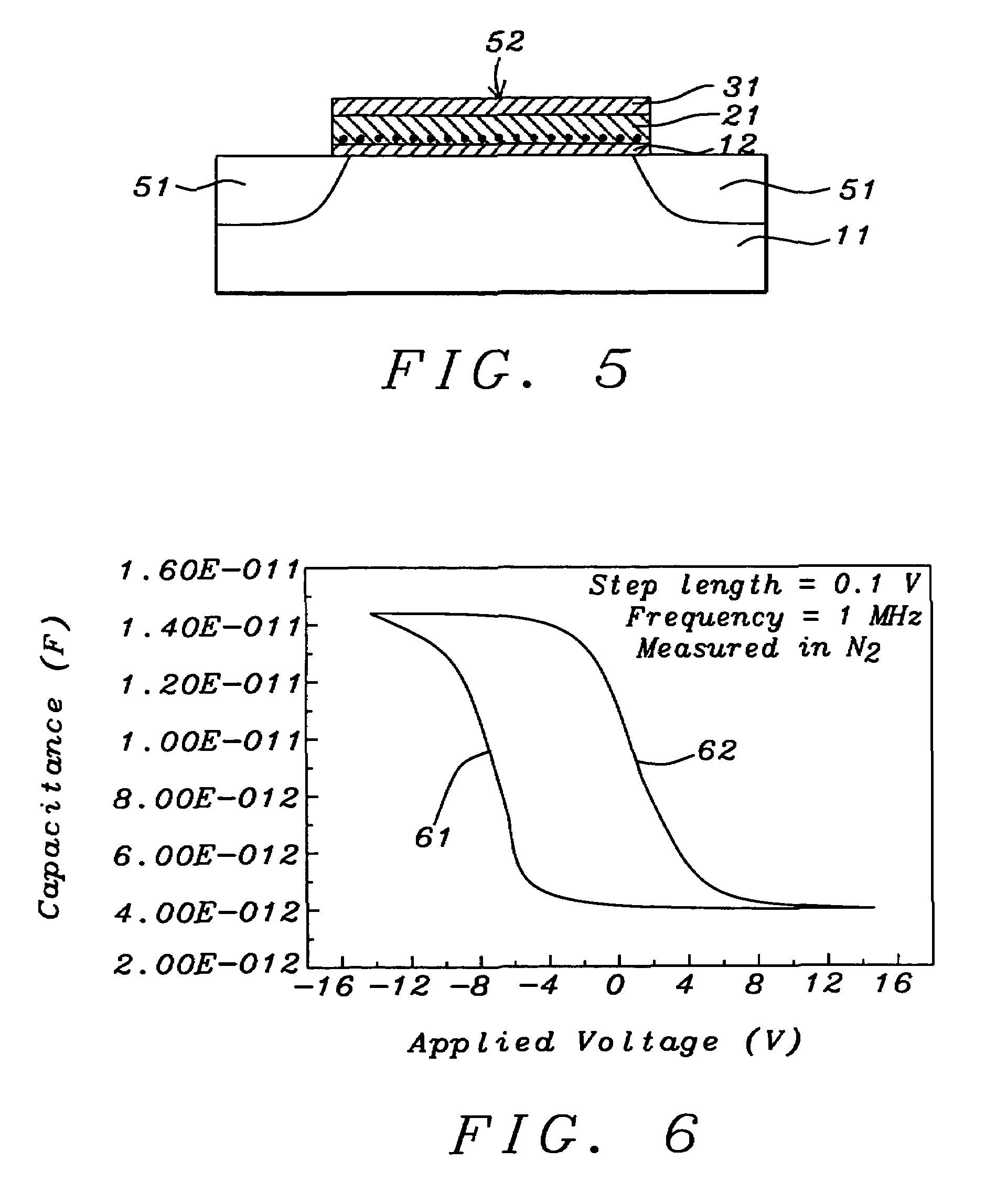Process to manufacture nonvolatile MOS memory device
a technology of nonvolatile mos and memory devices, which is applied in the field of microelectronics, can solve the problems of long processing time, uniform germanium profile in the oxide, and limitations of ion implantation technique, and achieve the effects of improving quality, improving control of oxide and interface quality, and improving quality
- Summary
- Abstract
- Description
- Claims
- Application Information
AI Technical Summary
Benefits of technology
Problems solved by technology
Method used
Image
Examples
Embodiment Construction
[0018]Overview: Rapid thermal oxidation is first used to grow a high quality layer of thin tunnel oxide. Chemical vapor deposition is then carried out to deposit a germanium doped oxide layer. A capping oxide is then deposited following which the structure is rapid thermally annealed to synthesize the germanium nanocrystals.
[0019]Referring now to FIG. 1, the process of the present invention begins with the provision of silicon body 11. Body 11 is preferably P-type but this is not essential for the invention to work. Tunnel oxide layer 12 is then grown on the upper surface of 11. This was achieved by means of rapid thermal oxidation (at between about 900 and 1,000° C. for between about 5 and 60 seconds in a dry oxygen ambient), leading to an oxide thickness that is between about and 2 and 5 nm.
[0020]Next, as seen in FIG. 2, layer 21 of germanium doped silicon dioxide is deposited onto tunnel oxide layer 12. Layer 21 was formed by reacting silane in a mixture containing between about ...
PUM
| Property | Measurement | Unit |
|---|---|---|
| thickness | aaaaa | aaaaa |
| thickness | aaaaa | aaaaa |
| thickness | aaaaa | aaaaa |
Abstract
Description
Claims
Application Information
 Login to View More
Login to View More - R&D
- Intellectual Property
- Life Sciences
- Materials
- Tech Scout
- Unparalleled Data Quality
- Higher Quality Content
- 60% Fewer Hallucinations
Browse by: Latest US Patents, China's latest patents, Technical Efficacy Thesaurus, Application Domain, Technology Topic, Popular Technical Reports.
© 2025 PatSnap. All rights reserved.Legal|Privacy policy|Modern Slavery Act Transparency Statement|Sitemap|About US| Contact US: help@patsnap.com



